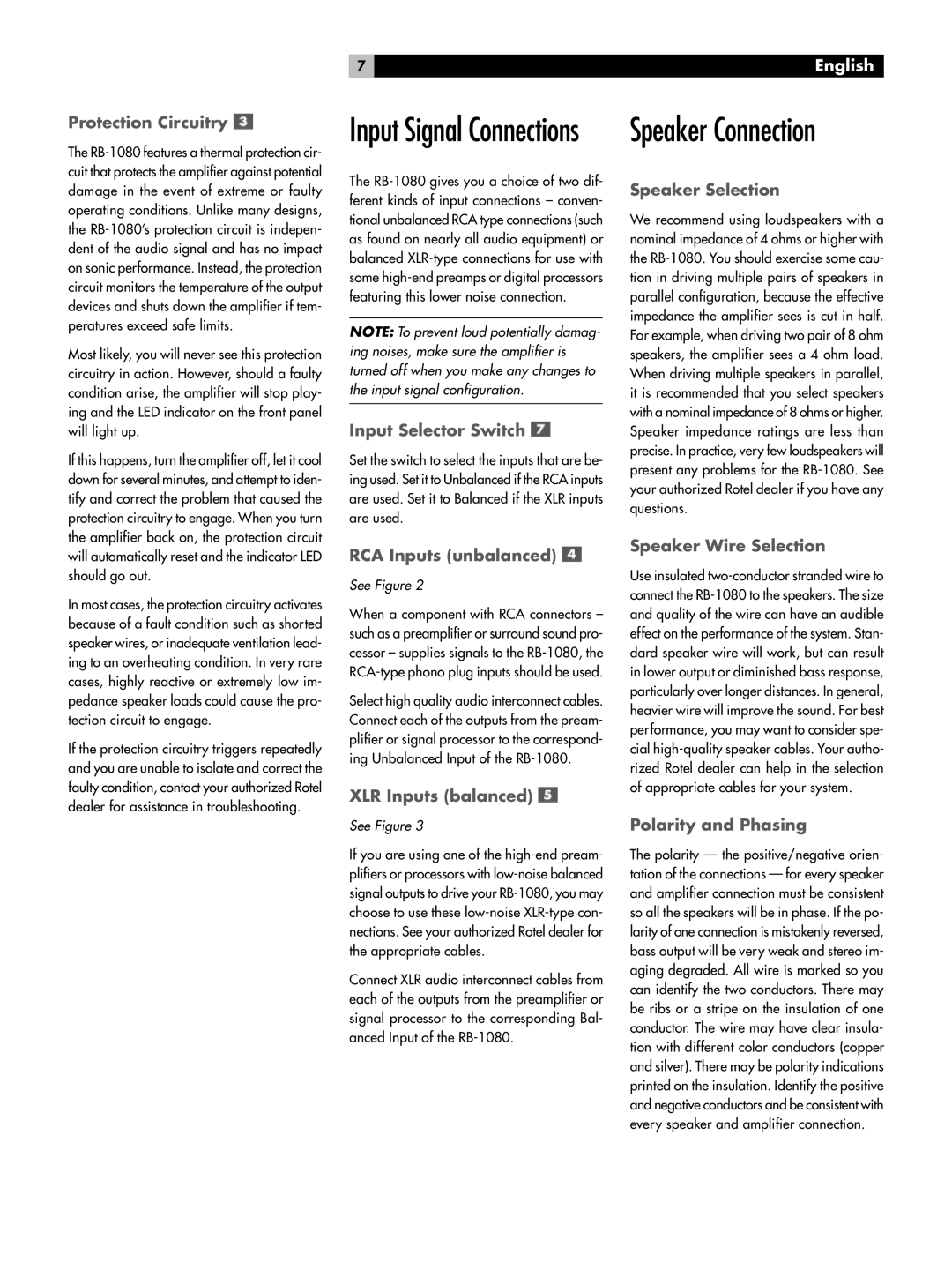RMB-1080 specifications
The Rotel RMB-1080 is a powerful multi-channel amplifier designed to deliver exceptional audio performance while maximizing the potential of any home theater system. Known for its robust build quality and high fidelity, the RMB-1080 is engineered for both music and movie enthusiasts seeking an immersive sound experience.One of the standout features of the RMB-1080 is its configuration as a 5-channel amplifier, which utilizes high-quality Class AB amplification technology. This design ensures a clean power output that minimizes distortion, allowing for dynamic sound reproduction even at high volumes. The amplifier offers a substantial power output of 200 watts per channel into 8 ohms, which increases to 350 watts per channel when driving 4 ohms. This substantial power facilitates the driving of even the most demanding speakers, delivering rich, clear sound across all frequencies.
The RMB-1080 employs a robust, efficient power supply that contributes to its performance. Its oversized toroidal transformer and extensive filtering capacitors work in tandem to deliver instantaneous power on demand, enhancing the clarity and impact of every note and cinematic explosion. The amplifier also features high-quality, audiophile-grade components, which are a hallmark of Rotel’s dedication to creating products that satisfy the most discerning audiophiles.
In terms of connectivity, the Rotel RMB-1080 is equipped with balanced XLR and unbalanced RCA inputs, allowing for seamless integration with various audio sources. The amplifier also includes 12V trigger inputs and outputs, making it easy to link it with other components in a home theater setup. This feature simplifies system power management, allowing users to turn multiple devices on or off simultaneously.
Cooling is another critical aspect of the RMB-1080’s design, featuring a well-ventilated chassis that ensures optimal thermal management. This not only allows for prolonged listening sessions without overheating but also contributes to the overall longevity of the amplifier.
Furthermore, the RMB-1080 is constructed to be user-friendly, boasting a sleek and modern aesthetic that fits well in any entertainment environment. Its forward-thinking design incorporates a durable chassis resistant to vibration and interference, maintaining the integrity of the audio signal.
In summary, the Rotel RMB-1080 is an outstanding multi-channel amplifier that combines power, precision, and versatility. With its high-quality components and thoughtful design, it is an ideal choice for anyone looking to elevate their home audio experience. Whether for music or movies, the RMB-1080 promises to deliver superb audio performance, making it a worthy addition to any sound system.

